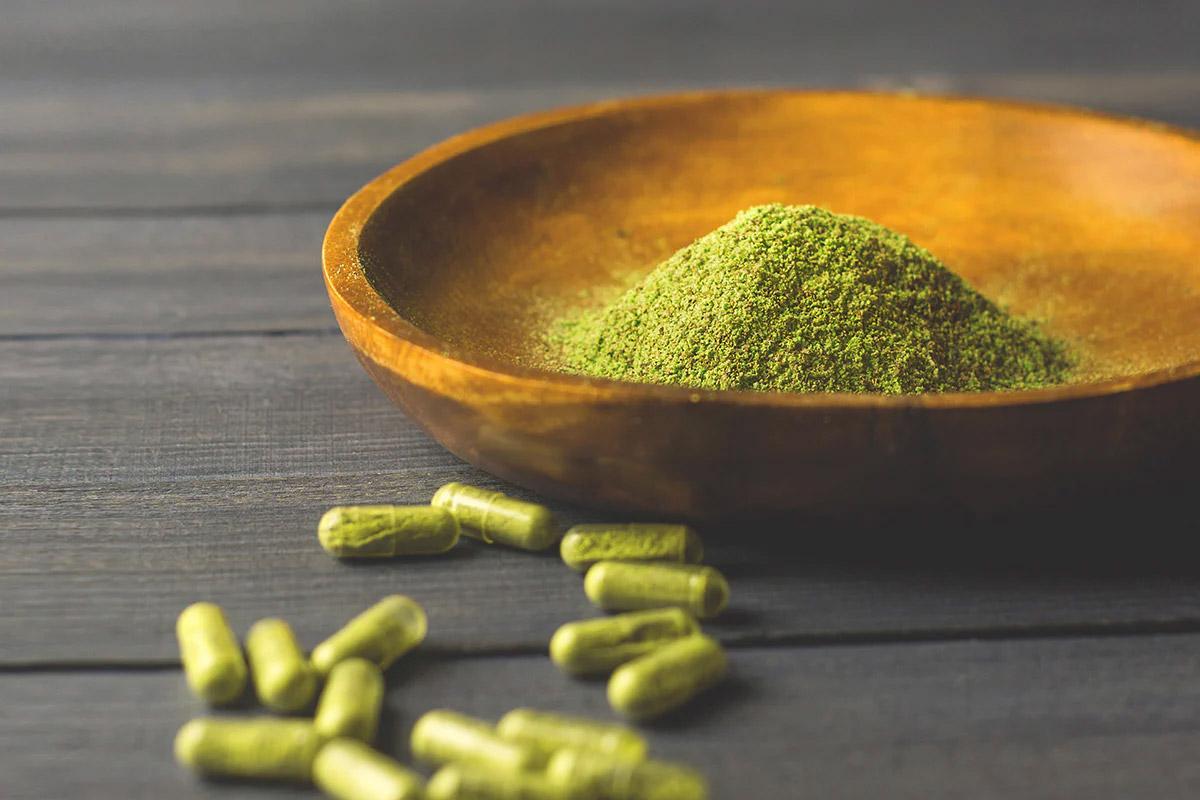Since there are so many different products in the Kratom space, many potential and new consumers become easily confused. They aren’t sure which strains they should opt for, the method that might work best for them, and more. With a slew of information available on the internet, determining what is right and wrong is another challenge for many new users.
Sometimes even existing users need a refresher and can benefit from reading credible information about Kratom. Here we discuss some fundamental differences between Kratom powder and extract. Kratom is highly concentrated, making it a portable product, and you can store it for a long time. On the other hand, Kratom powder, which is more readily available, combines well with various beverages and foods.
What is Kratom?
Kratom comes in many different forms, such as powder and extract. However, they all come from a tropical evergreen plant that can reach immense heights. The Kratom tree grows along river and stream banks, flood plains, and tropical forests and is native to Southeast Asia (Thailand and Borneo.)
Its trunk can grow to a diameter of three feet, and it can shoot up to 80 feet in height. The Kratom tree has a smooth, grey bark. Its oval, glossy leaves have 12-14 veins each, with opposite growth patterns. The leaves are harvested at a particular time in their growth cycle, and the processing takes place using time-tested methods.
About Where Kratom Comes From
Kratom is not a modern world product, and its use dates back centuries. It has been used as a powder, steeping leaves into tea or chewed. Southeast Asian locals have used it since ancient times, for everything from spiritual enlightenment to fatigue. Some people may just pluck leaves from the tree and chew of them, while others use a more traditional approach in its preparation.
Although it grew extensively in Southeast Asia and was very popular there, it became known in other parts of the world when Pieter Korthals, a Dutch botanist, named it Stephegyne Speciosa and formally introduced Kratom to the Western world in 1839. In 1859, George Darby Haviland reclassified the plant, changing its name to Mitragyna Speciosa. Thailand, Indonesia, and Malaysia are the three countries where Kratom grows extensively.
In Thailand, these trees are largely found on plantations where local farmers cultivate them. Of course, there are some trees in the wild too. Kratom also grows or is grown in Vietnam, Cambodia, Myanmar, the Philippines, and some smaller areas in China.
What’s So Special About Kratom?
Kratom has almost 25 alkaloids, meaning it has an incredibly high alkaloid count. Of these 25 alkaloids, 7-hydroxymitragynine and mitragynine are particularly effective. The latter makes up about 66% of all alkaloid content in a Kratom leaf.
Kratom enthusiasts claim that this beneficial, evergreen tropical leaf influences a range of conditions, and regular consumption can boost your energy levels and overall well-being. Alkaloid percentages in Kratom leaves aren’t the same in every tree and every region. Many different variables have a role to play in these alkaloid levels, including the latest rainfall and the duration of the rainy season in the region.
The tree’s harvesting frequency determines the number of alkaloids present. Trees that are harvested frequently have leaves with a more significant number of alkaloids than those gathered at longer intervals. If the region experiences a dry spell, the Kratom tree leaf growth will slow down slightly, and the alkaloids are amassed in their buds. Once it rains, they retain the high alkaloid content, despite experiencing a growth spurt. Rhynchophylline, mitraphylline, and paynantheine are some of the other alkaloids present in Kratom leaves. However, mitragynine is the most abundant.
The Process of Making Kratom Strains
There are three different Kratom color strains- white, green, and red. Each of these strains has specific benefits for consumers. The common belief is that the type of Kratom trees determines the leaf color. However, this isn’t always the case. Southeast Asian tropical forests have many green and white Kratom trees. However, most Kratom strains available today, regardless of their color, are derived from red vein Kratom. The drying and fermentation processes change the color of the product.
If you prefer using Kratom powder, you can check the colors to know which variant you are buying. On the other hand, if you choose to use the extract, you would know which strain it is only by what is mentioned on the label.
How Do Kratom Strains Differ?
The primary Kratom leaf strains are- white, green, and red and most come from the red vein variant. The drying and processing methods produce the different strain colors. The strain’s hue depends on the amount of ultraviolet light the leaf receives when it ferments or dries. You will also find yellow-veined hybrid variants. This particular strain gets its yellow color from the fermentation process it goes through. Here is some additional information about these different strains:
- White – This particular strain helps give an extra boost, helping you seize the day. It has some qualities of green vein Kratom as well as red vein Kratom.
- Green – This strain promotes alertness and helps you stay motivated during stressful situations.
- Read – This is the most popular Kratom strain on the market. It helps you maintain a more balanced perspective while promoting calm and peacefulness.
Many people like mixing their Kratom strains. Combining white and green strains may help improve overall well-being, keeping you energetic and motivated.
The Differences Between Kratom Powder and Extract
The main difference between these two Kratom types is that one is in powder form while the other is semi-liquid. However, they both go through the same processing method up to a certain point. This is the general process followed:
- The leaves are typically picked right after the first rain after a lengthy dry spell in both these methods. This is the period the leaves have the highest alkaloid levels.
- The alkaloid level rises with an increase in the time between the dry weather, precipitation, and humidity.
- In the Kratom powder-making process, the leaves are cured by sun-drying them. The duration for which the leaves are kept in the sun determines the Kratom strain colors- white, green, or red.
- Once the leaves have dried completely, they are ground into a fine powder which is then packaged for sale.
- Technically, there are two specific Kratom extract types- water/tea-based extract. The essence is extracted from the leaves in both these forms and then carefully preserved in semi-liquid or liquid form. The other form is resin, which is incredibly challenging to produce and consume.
- In water-based extractions, either water+ethanol or just water is used to create a highly potent viscous liquid. Since the Kratom is boiled for a longer duration, the resulting essence is incredibly potent.
- In this extract-making process, the Kratom leaves are first soaked thoroughly in an ethanol-water combination or plain water for a few weeks after harvesting. Once the water evaporates, the leaves are dried in the sun, after which they are turned into an extract.
Never opt for Kratom “shots,” as these are typically combined with other chemicals and liquids to create different flavors. Credible and well-established Kratom vendors must maintain transparency and mention all the ingredients in the product very clearly on its labeling.
How to Take Kratom
Versatility is one of Kratom’s notable characteristics, and you can take it in many different ways. Kratom powder continues to be the most popular form available today, and many individuals use it to make capsules, in beverages, or the widely used toss-and-wash way. Let’s look at these different methods:
- Toss-and-wash is the most straightforward way to consume Kratom powder. In this method, you just take your dosage in powder form and wash it down with some liquid right away.
- If you prefer to take your Kratom more discreetly, capsules are the way to go. When you make your capsules, you can measure the dosage accurately down to the milligram.
- Many people also potentiate their capsules with cat’s claw, turmeric powder, or cayenne pepper.
- Another no-fuss way to take your Kratom is to brew it into a tea, adding the flavoring or sweetener you prefer. Have the tea hot or chill and consume it later.
- You can boost your Kratom’s benefits by combining the tea with apple cider vinegar, chamomile, citrus fruits, and other similar potentiators to make your dose last far longer.
- Like Kratom powder, you can take the extract by adding it to a beverage or by swallowing it as is.
- You also have the option to take it sublingually, meaning you place the dose right under your tongue, allowing it to remain there until it is absorbed.
- The mouth has several blood vessels, particularly along the cheek walls and under the tongue. One of the most significant benefits of consuming the extract sublingually is that the absorption is quick, and the Kratom enters your bloodstream within moments.
The Final Word
Kratom powder and extract are both versatile and widely used methods of taking this substance. The powder is dried and powdered pure Kratom leaf, easily adaptable to the beverages and meals that are part of your daily routine. On the other hand, Kratom extract is a semi-liquid product formed after distilling Kratom in water and ethanol or water base. You can drop it into your mouth and wash it down with a beverage, mix it into food or take it sublingually.
The method you choose typically depends on what you prefer. The majority of seasoned Kratom users prefer using extract because it is portable and has higher potency levels; this gives them the benefits they want, wherever they are. However, it is safer to use Kratom powder because you can measure the dosage precisely, which is why some prefer it over the extract. Regardless of your Kratom preferences, you must opt for high-quality products that are safe for consumption.





